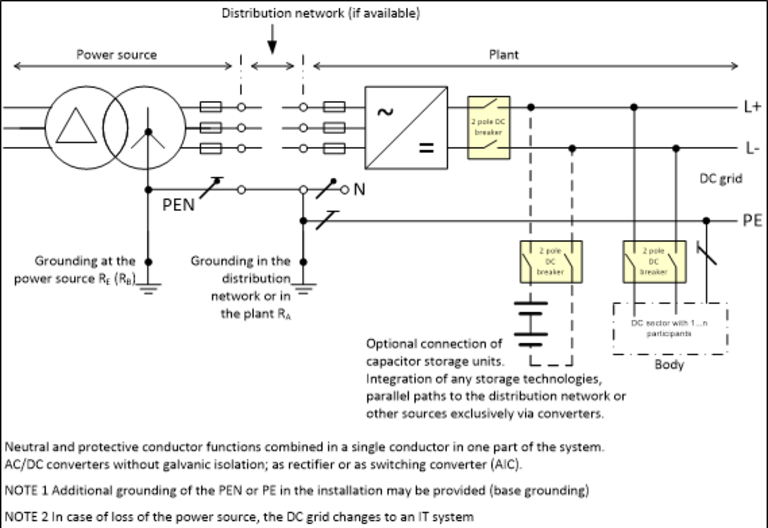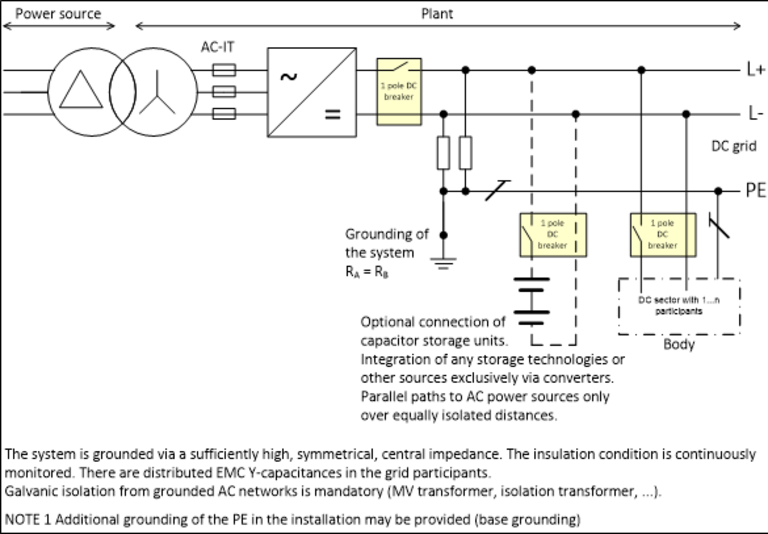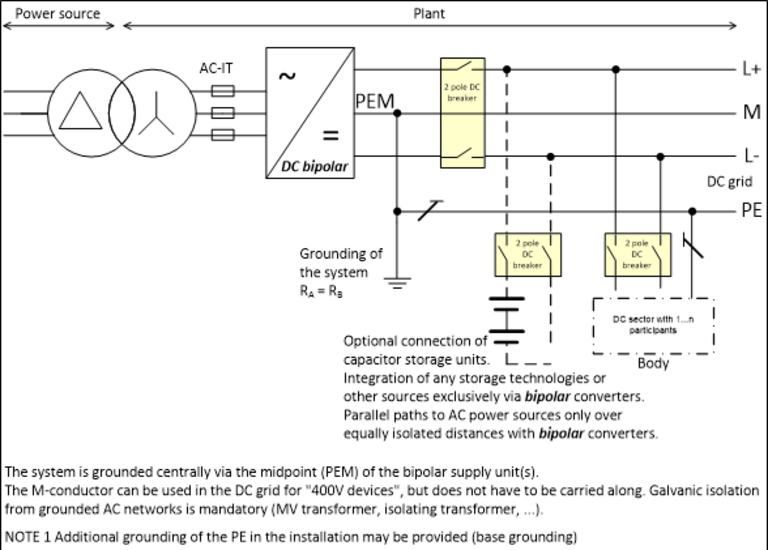6 Which grid types are there for DC?
There are basically the same grid types as for AC systems, i.e. TN, TT and IT systems.
In addition, there is the DC grid grounded on the AC side for industrial applications, since the systems are usually connected to the AC grid.
6.1 What does the AC-grounded DC-System look like?
The grounding reference is realized via the star point grounding at the transformer of the AC grid. The operational grounding takes place centrally at the transformer.

6.2 What does the DC IT grid look like?
In the DC IT grid variant, the DC grid is galvanically isolated from the AC grid via an isolating transformer. The reason for this is not, as with a classic IT grid, that the DC IT grid should continue to operate after an initial ground fault, but rather to simplify the parallel switching capability of power supply units.
In this DC IT grid, no further operation is permitted in the event of an earth fault; the fault location must be disconnected as quickly as possible by a circuit breaker (<10 s).

6.3 What does the mid-point earthed DC TN-S grid look like?
With this type of grounding, the midpoint of the DC voltage is earthed with low resistance. For this purpose, the supply unit can, for example, generate two DC voltages galvanically isolated from the AC mains, which are connected in series and whose midpoint is earthed with low resistance. In addition to the galvanic isolation, bipolar protection is required as with AC-side earthing.

6.4 What is the preferred grid type for DC?
Systems grounded on the AC side are recommended for systems installed in the vicinity of an AC hall (brownfield). IT systems are suitable for new installations as long as the insulation resistance is high (greenfield).
For extended installations with low insulation resistance, the center-point grounded DC-TN-S system is recommended.
The TT system with two different grounding points is not suitable because stray currents occur in the event of potential differences between the grounding points, which can lead to increased corrosion.